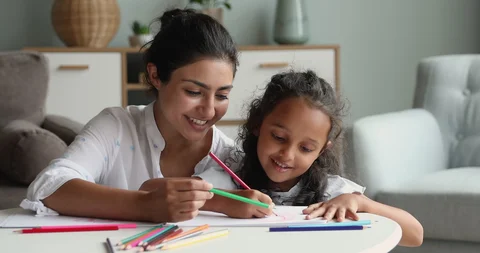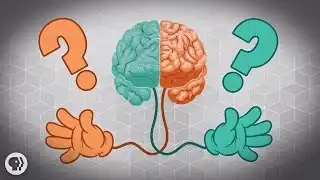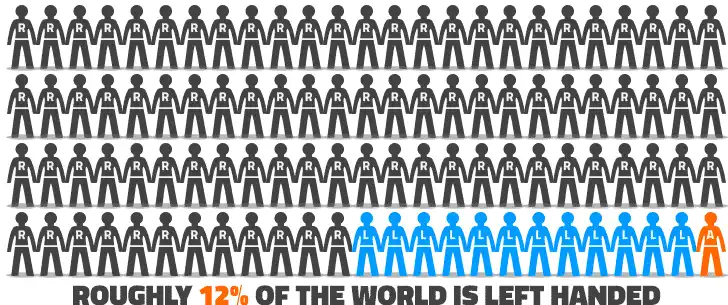Have you ever noticed how most people use their right hand to write, throw a ball, or even eat? But then, there are others who prefer to do all of that with their left hand. This is what we call handedness — the preference for using one hand over the other to perform tasks. Most people are right-handed, but about 10% of the population are left-handed. So, why does this happen? Is it something we’re born with, or can it be changed? Let’s explore the fascinating world of handedness!

What Is Handedness?
Handedness refers to the tendency to use one hand more than the other. If you’re right-handed, your right-hand feels stronger and more natural for tasks like writing or throwing. If you’re left-handed, it’s your left hand that takes the lead. There are also people who are ambidextrous, meaning they can use both hands equally well for most tasks, but this is quite rare.

The Science Behind Handedness
Scientists have been curious about why some people are right-handed and others left-handed for a long time. It turns out that handedness is a bit like a puzzle that involves both genetics (what you inherit from your parents) and the environment around you.

Genetics – Are We Born This Way?
Many studies suggest that handedness is partially influenced by genetics. In fact, certain genes seem to play a role in determining whether you’ll be right-handed or left-handed. If both your parents are left-handed, you have a higher chance of being left-handed too. However, this doesn’t guarantee anything, as many children of left-handed parents still turn out right-handed.

According to the research, the preference for using one hand over the other is linked to right-left asymmetry in the brain. Our brain is split into two halves called hemispheres — the left hemisphere and the right hemisphere. In most right-handed people, the left hemisphere controls language and fine motor skills (like writing), which might explain why they prefer their right hand. Interestingly, some left-handed people also rely on their left hemisphere for these tasks, but not always.

However, while genetics play a part, it’s not the only factor. In fact, scientists have found that only 25% of handedness is determined by our genes, which means the other 75% comes from other influences!
The Role of the Environment
Apart from genetics, the environment you grow up in also influences whether you become right- or left-handed. This can include things like cultural norms, habits, and even the way you’re taught to do tasks as a child.

In many cultures, especially in the past, being left-handed was seen as “unusual,” and people were sometimes forced to use their right hand, even if it felt uncomfortable. This practice has decreased over time, and now people are generally encouraged to use whichever hand feels natural to them.

Sometimes, handedness can be affected by early experiences. For instance, if you injure your right hand when you’re young, you might start using your left hand more, which can make you more comfortable with it.

Are Animals Right- or Left-Handed Too?
Interestingly, humans aren’t the only ones with handedness! Some animals also show a preference for one paw or hand. Studies have shown that chimpanzees, our close relatives, often use one hand more than the other, just like humans. Even certain birds, like parrots, seem to favour one foot over the other when holding food.

This suggests that handedness isn’t something unique to humans but is found across different species. It could be an evolutionary trait that helps animals perform tasks more efficiently.
The Brain’s Role in Handedness
Your brain is a powerful organ that controls everything you do, including which hand you prefer to use. For most right-handed people, the left hemisphere of the brain is more dominant, especially when it comes to tasks like speaking, writing, and problem-solving. For left-handed people, the brain’s right hemisphere is often more active, though this isn’t always the case.

This is why some researchers believe that handedness is linked to brain development before you’re even born! The way the two sides of your brain develop may determine whether you prefer your right or left hand.
Can You Change Your Handedness?
While handedness is mostly determined by your brain and genetics, it is possible to change which hand you use for certain tasks, though it’s not very common. For example, if a right-handed person injures their dominant hand, they might learn to use their left hand instead. Over time, they could become almost as good with their left hand as they were with their right!

However, changing your handedness on purpose can be difficult because your brain has already “wired” itself to work with one hand more than the other. That’s why it feels unnatural when you try to write with the “wrong” hand.
Fun Facts About Left-Handedness
- Historical Figures: Some famous people were left-handed, including artists like Leonardo da Vinci and political leaders like Barack Obama. It’s often said that left-handed people are more creative, though there’s no scientific proof of this!

- International Left-Handers Day: Every year on 13th August, left-handed people celebrate International Left-Handers Day. It’s a fun way for lefties to feel proud of their unique trait.

- Tools for Lefties: Most tools, like scissors, are designed for right-handed people, which can make life a bit tricky for lefties. However, there are special products made just for left-handed people, like left-handed scissors and notebooks!

Why Is There a Bias Toward Right-Handedness?
About 90% of the world’s population is right-handed, making left-handed people a minority. Scientists believe this could be due to evolutionary reasons. Long ago, humans needed to work together to survive, and it might have been easier if most people used the same hand for certain tasks, like using tools or hunting. Over time, being right-handed may have become more common because it was more efficient.

Cultural factors also played a role. In many societies, the right hand was associated with positive actions, while the left hand was seen as less favourable. Thankfully, these old-fashioned ideas have changed, and left-handedness is now seen as just another natural variation.
Is There an Advantage to Being Left-Handed?
There’s a popular belief that left-handed people have certain advantages, especially in sports. For example, left-handed tennis players, like Rafael Nadal, may have an edge because right-handed players aren’t used to facing them. Similarly, in boxing, left-handed fighters (often called southpaws) can be tricky opponents because their moves come from unexpected angles.

However, this doesn’t mean that left-handed people are naturally better at sports. It just shows that being different can sometimes surprise others, giving lefties a small advantage.

Conclusion
So, why are some people right-handed and others left-handed? It’s a mix of genetics, brain development, and environment. While most people are right-handed, being left-handed is perfectly normal and even comes with its own unique perks. Whether you’re a righty, a lefty, or somewhere in between, it’s all part of what makes you, you!
For more interesting articles, please visit www.kidzherald.com





